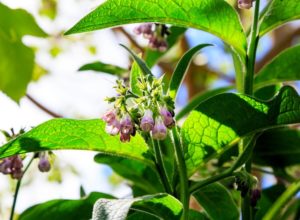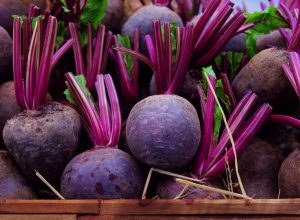[h4]TROPICAL climate[/h4]
Zone 0: Now is the time to start planning for the wet season garden. The current forecast is for a very dry wet season and perhaps an El Nino so look at water storage options in the yard. Swales will slow down the passage of rain through the property. Look at other possibilities for water storage whether in the ground, under the mulch, in-ground or above ground tanks, bog gardens or plants which store water. Bananas and spider lilies do this well. Check the house and shed guttering for leaks.
Check out seed catalogues and what seeds are in the crisper. I keep all my seeds in the crisper in the fridge. This has given me safe storage of seeds for many years past their use by date. Seed planting times will depend on whether you think there will be an early or late wet season. We’ve been having very late wet seasons so this year’s planning will be with this in mind. Seeds of Okra and Rosella can be ordered now and planted next month.
Dry the peel of the citrus for use in cooking. The volatile oils make it useful as a firelighter and to improve the flavour of the BBQ. The zest can also be taken off and frozen in ice cubes for use all year. Wander around the garden in the early morning to hand pollinate the pumpkin and passionfruit flowers.
Zone 1: There is still time to plant more cool season vegetables and have them mature before the heat and humidity send them bolting to seed or dying of suffocation in the humidity. The mint is going gangbusters in the cooler weather. Add it to tea and cool water for drinks with a touch of magic.
Zone 2: The dry season hasn’t really started to bite yet so keep up the mulching and watering under the mulch.
Zone 3: Citrus and jackfruit are being harvested. Allow some pawpaw, or if you want to be fashionable, papaya, to ripen – and use some green to make the green pawpaw salad with chilli. Green pawpaw can also be cooked as a vegetable, a pumpkin equivalent. The green pawpaw takes a long time to cook so test for tenderness before serving.
Zone 4: Make sure that the wet season growth clean-up is complete and the mulching up to date. Check drainage and irrigation systems for leaks. Now is the ideal time to remedy any drainage issues. If you need to put in any swales do them now so that the vegetation can grow in them. This will reduce the likelihood of erosion when there are heavy falls once the wet season starts. Check the moisture level in the compost heap as it can dry out very quickly and stop breaking down. The chokos are fruiting well. These have a negative history in some families. They are best harvested when very small and can be included whole in soups and stews.
Zone 5: The Riberry is still flowering and setting fruit. None is ripe enough to harvest yet. Make sure the trees and other vegetation is pruned so that the postie has safe access along the footpath.
Kathleen Hosking
www.solutionfocused.net.au
[h4]MEDITERRANEAN climate[/h4]
Zone 0: We’ve had a few proper cold nights here at last. Short days mean little time spent out in the garden, more time planning indoors…in our case still refining the chookyard design to accommodate kiwifruit vines to grow over it for shade.
Zone 1: Still harvesting bright, crispy salads but not much planting lately. Digging the newly made compost into the raised garden beds at the front ready for spring and planning to grow solanum crops here, now that the beds have had a couple of years’ break from this family (tomatoes, capsicum, chili, eggplant, etc). They can be started in containers indoors or in a greenhouse or cloche from late August/early September and then planted out when the ground has warmed up nicely (if in doubt, give it the bare bottom test). No point in jumping the gun as the later seedlings will overtake the earlier ones in the more favourable conditions.
Out the back, kale, parsnips, garlic, mustard and potatoes suddenly put on a growth spurt while we went on holidays for a week, as well as a few sneaky tomatoes from the compost – probably cherry ones – enjoying a bit of reflected warmth from the light fence to their south. Normally I’d remove them in the interests of crop rotation in a vegie bed, but it’s about to be converted to a fruit tree bed anyway so they can have their way for now. As the weeds come out (lots of thistles = happy chooks and very yellow yolks!), veg seeds can take their place – e.g. beetroot, carrots, brassicas, peas, potatoes (certified seed potatoes), the last of the garlic (cloves buried thumb-depth with the pointy end up), parsnip, radish, rocket and spring onion.
Zone 2: The compost has now pretty much broken down, losing all its smell and colour, but with some larger pieces still identifiable. It could either be left to mature in the heap or buried where it won’t come into direct contact with plant roots until early spring. I’m opting for the latter approach as the digging warms me up. Plenty of rain filtering into the worm farm means that the liquid output hardly needs to be diluted (it’s already weak tea colour) before sprinkling it over the leafy greens and around the citrus trees.
Zone 3: It’s time to select my cherry tree and new grapevines for planting soon, while they are still dormant. Also time for deciduous grafting – the Rare Fruit Society of SA (http://www.rarefruit-sa.org.au/) has just had its annual winter grafting sessions with hundreds of varieties on sale, and in Victoria the Heritage Fruits Society will be doing the same in early August: http://www.heritagefruitssociety.org.au/. Bare-rooted fruit trees are lined up in the nurseries ready for planting. Around here where we have heavy clay soil, most trees appreciate some gypsum and plenty of well-rotted compost added to the soil before planting. In sandier areas nearby, replacing the gypsum with a clay slurry will help the soil to hold onto moisture and nutrients more readily, but the compost is just as welcome everywhere. Make sure when planting that the hole is at least twice the width of the rootball, trim off any damaged roots cleanly, and ensure that if it’s a grafted tree, the graft is well above soil level when planted. I soak roots in a bucket of diluted seaweed extract before planting, and then add the liquid when watering in after planting.
Zone 4: Templetonia retusa is budding with its brilliant red flowers again already. Wattles are fluffing up, bees are out in force and some days you’d swear it’s almost spring. It’s relatively quiet at the State Flora native nursery http://www.environment.sa.gov.au/our-places/State_Flora – a great time to get plenty of specialist advice – and still good conditions for planting out most local native species. The Friends of the Botanic Garden also run a monthly native plant sale at Mt Lofty Botanic Garden – next one on 24th August – see the plant list: http://media.wix.com/ugd/2a360a_49ca33d1e8234d52831874c17f0f9e0a.pdf.
Zone 5: National Tree Day saw local schools and community groups getting into the revegetating spirit. In spite of the promo shots of advanced trees going into the ground every year, it really does make more sense in a home situation to buy inexpensive tubestock (seedling trees) and to get more of them, as they recover from the transplant shock so quickly and put on rapid growth the following year, potentially giving you a lot more biodiversity for your buck than their older cousins. It also makes sense to use sturdy tree guards, weed the surrounding area and keep it well mulched in the coming months – not sprayed with herbicides! I was saddened to see a recent reveg project on our holiday that had been wiped out by well-meaning poisoning of the surrounding grass.
Nadja Osterstock
www.nadjasgarden.com.au
Facebook page: https://www.facebook.com/pages/Nadjas-Garden/147773922060096
[h4]WARM TEMPERATE climate[/h4]
August is the windy period according to our local traditional folklore. There is the mischief in the wind, felling old trees and allowing new growth to burst forth.
Zone 0: Planning new garden projects is a delight and I am listening out for local advice, getting out and meeting people, exchanging ideas and finding out what is doing well around town. We are also busy sorting through resources and finding their best use which may mean they are better off shared with people who are ready to use them. Of course, the mother of all the R’s is Redesign, and design is the strength of Permaculture. The scarecrow gets a new outfit at the clothes-swap and we explore more recipes to use up the last of the pumpkins, and fermented, frozen and dried foods from the garden. The chillies and native raspberries haven’t really stopped they are wonderfully dependable. Sprouts and ferments are a great sources of greens in early spring hungry period.
Zone 1: Now is a great time to pick up sticks and use them to build protection over the seedlings from any late frost or errant chickens should they find a way to sneak into the intensive gardens. The pizza oven is waiting to be fired up again and the cool nights are a great excuse to run the radiant hot oven and outside burner made from an old washing tub (be careful to check there isn’t an external ring containing graphite).
Zone 2: This is an excellent time to work on water harvesting projects and improve the soil before the spring growing frenzy. Offer to compost the neighbours clippings, the local horse manure, and any scraps from the local cafe/bakery would be great to boost the worm farms.
Zone 3: Last spring’s pumpkin vine is still lying on the ground, mostly dried out. This is perfect to plant into, but with something different such as bush beans or corn, to enable the soil to have a rest. Zone 3 contains plants that demand a bit of space. These include many of the vines, potatoes, rambling tiny tomatoes, Yacon and Jerusalem artichoke. The ruthlessly dominating plants such as bananas and sweet potato can be used further afield on the edges of Zone 4. They are excellent at suppressing weeds. The Banana has an amazing ability to shed it’s outer leaves in an attempt to cast off the persistent Maidera Vine (Anredera cordifolia). We use recycled and reused tarpulins to help manage all the weeds and rehabilitate the soil at the same time. It is a simple and effective tool. My definition of a weed is simply ‘a plant that does not respect diversity.’
Zone 4: We start making new stick piles of the woody weeds, creating small swales and planting the edges of our garden like pioneer plants that explore the edges of the forest. We are digging up seedling trees that are not so welcome in the intensive mulched gardens and transplanting them or sharing them with others.
Zone 5: This time of year is ideal to finish the heavy projects because the days are not too hot and the ‘weeds’ are sleeping. Many of the trees still stand naked and we’re planning to tame the feral beehive. The water-dragon is warming up looking for fallen fruit and the birds are getting busy. The neighbour’s cats come around to prowl so we kept the kitten that we found in our garden and make him wear a bib so he doesn’t catch the little birds. His scent is enough to deter other cats. The fox is getting hungry and attacks any poultry that does not go to bed. The fox-proof ladder is working very well. and the snake proofing will be handy in spring.
April Sampson-Kelly
permaculturevisions.com








